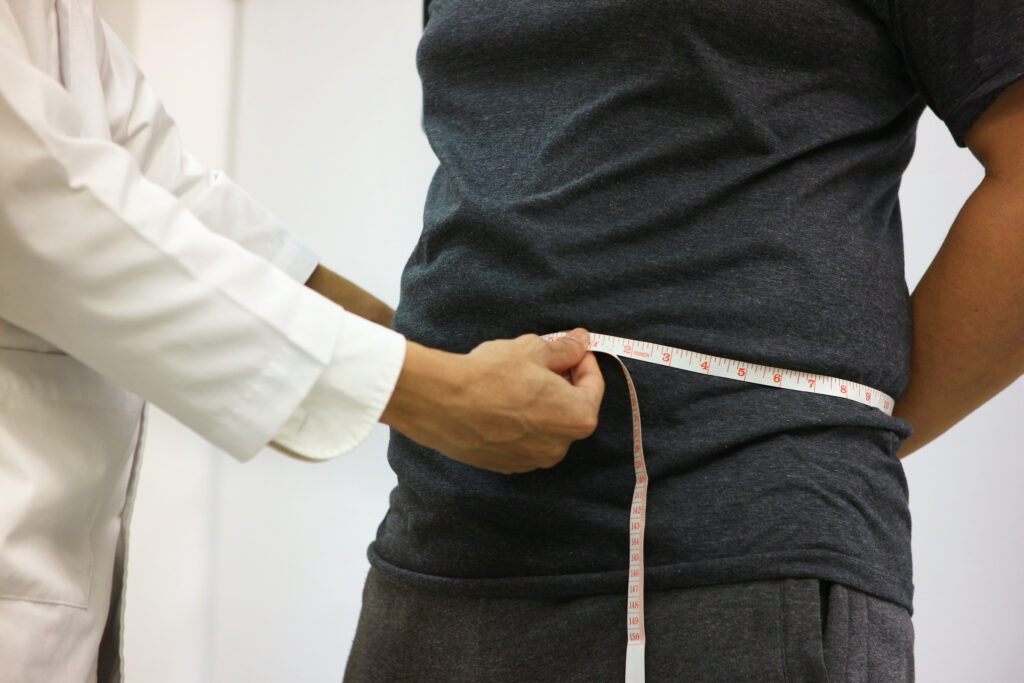
Obstructive sleep apnea (OSA) is well-established as a disease that is also a risk factor for many other health problems. Studies continue to help increase understanding of why people develop sleep apnea, which people are more susceptible, when to test for it, how to treat it properly, and so forth. A recent study added to this knowledge, starting with a closer examination of OSA, a look at obesity, and then an uncommon possible influencing factor1.
The Pathophysiology of OSA remains complex
The anatomical predisposition factors are present in all patients (in 30% of patients without other factors). In 70% of cases, there are 1 or more associated non-anatomical pathophysiologic factors. This is responsible for a different phenotype of the disease.2
There are 4 pathophysiologic factors involved in the pathogenesis of OSA:
- Anatomic, which can lead to greater collapse of the upper airways in nonobese patients
- Instability of ventilatory control, also known as high loop gain
- Neuromuscular inefficiency of the dilator muscles of the upper airways
- Increased propensity for nocturnal awakenings due to respiratory stimuli or a reduced awakening threshold, known as low arousal threshold (also called low respiratory arousal threshold, or LRAT).2
Nonobese patients with OSA: looking at an unusual cause
A recent study looked specifically at the role of LRAT in nonobese patients. Nonobese patients with OSA are a subgroup of individuals with clinical, polysomnographic, and pathophysiologic features.1 Little evidence exists regarding the role of LRAT.1 But, because there could be a non-anatomical pathological prevalent trait, this factor could explain the difficulty in treating OSA in nonobese patients.1
How prevalent is low arousal threshold?
Low arousal threshold is present in 30% to 50% of all patients with OSA.2 Disturbingly, another study showed that LRAT was observed in more than 60% of African American patients evaluated for OSA. This study also showed a significantly higher LRAT score in African American females, nonsmokers, patients with body mass index (BMI) <25, and patients with mild sleep apnea severity.3
Nonobesity by the numbers
Nonobese patients are those with a BMI <30 kg/m2. 1 Approximately 20% of adults with OSA are nonobese.4 The number of people with OSA is thought to be as many as 18 million in the United States—1 in 15 adults—with 80% undiagnosed. Some estimates are much higher.
Uncommon characteristics
OSA in nonobese patients is usually less severe and less frequent. However, it is essential to identify these patients because they are 4 times more likely to develop hypertension than obese individuals without OSA.5 Nonobese patients are at risk for early atherosclerosis—approximately 2.7 times more than obese patients without OSA, and this risk increases as the severity of the syndrome increases.6 Also, nonobese patients with OSA are usually younger, so early detection and care could reduce long-term risk associated with the syndrome.7
Diagnosis and treatment
An in-laboratory overnight sleep study using polysomnography (PSG) is routinely indicated for the diagnosis of respiratory sleep disorders. The study authors point out that an excellent, alternative is nocturnal portable monitoring (PM), often known as home sleep apnea tests, or HSATs.
The treatment of choice is continuous positive airway pressure (CPAP); however, nonobese patients with OSA with a low arousal threshold have poorer adherence to CPAP therapy.8 CPAP may not be the right therapy for everyone. For some patients, other approaches such as mandibular advancement devices (MADs), maxillofacial surgery, hypoglossal nerve stimulation, or a pharmacological approach with targeted therapies may be more appropriate than CPAP.8 Non-anatomic interventions (e.g., non-myorelaxant sedatives) to increase the threshold for arousal, alone, or in combination with existing therapies (e.g., CPAP or oral appliances), may yield greater therapeutic success in this group of patients.2 Improved understanding of the pathophysiology of OSA in recent years provides an opportunity to develop individualized therapies based on subpopulations and mechanisms.1
The study authors believe that further pathophysiologic studies are needed to better clarify the role of low arousal threshold in patients with OSA and in the nonobese subgroup.
REFERENCES:
1. Antonaglia C, Passuti G. Obstructive sleep apnea syndrome in non-obese patients. Sleep Breath. 2021. doi: 10.1007/s11325-021-02412-1
2. Eckert DJ, White DP, Jordan AS, Malhotra A, Wellman A. Defining phenotypic causes of obstructive sleep apnea. Identification of novel therapeutic targets. Am J Respir Crit Care Med. 2013;188(8):996-1004. doi: 10.1164/rccm.201303-0448OC
3. Moghalu O, Whitesell P, Kwagyan J. Low respiratory arousal threshold (LRAT) in African Americans with obstructive sleep apnea (OSA).
Neurology. 2020;94(15 suppl):2740.
4. Heinzer R, Vat S, Marques-Vidal P, et al. Prevalence of sleep-disordered breathing in the general population: the HypnoLaus study. Lancet Respir Med. 2015;3(4):310-318. doi: 10.1016/S2213-2600(15)00043-0
5. Bixler EO, Vgontzas AN, Lin HM, et al. Prevalence of sleep-disordered breathing in women: effects of gender. Am J Respir Crit Care Med. 2001;163(3 Pt 1):608-613. doi: 10.1164/ajrccm.163.3.9911064
6. Luyster FS, Kip KE, Aiyer AN, Reis SE, Strollo PJ. Relation of obstructive sleep apnea to coronary artery calcium in non-obese versus obese men and women aged 45–75 years. Am J Cardiol. 2014;114(11):1690-1694. doi: 10.1016/j.amjcard.2014.08.040
7. Frey WC, Pilcher J (2003) Obstructive sleep-related breathing disorders in patients evaluated for bariatric surgery. Obes Surg 13(5):676–683. https://doi.org/10.1381/096089203322509228
8. Gray EL, McKenzie DK, Eckert DJ. Obstructive sleep apnea without obesity is common and difficult to treat: evidence for a distinct pathophysiological phenotype. J Clin Sleep Med. 2017;13(1):81-88. doi: 10.5664/jcsm.6394
